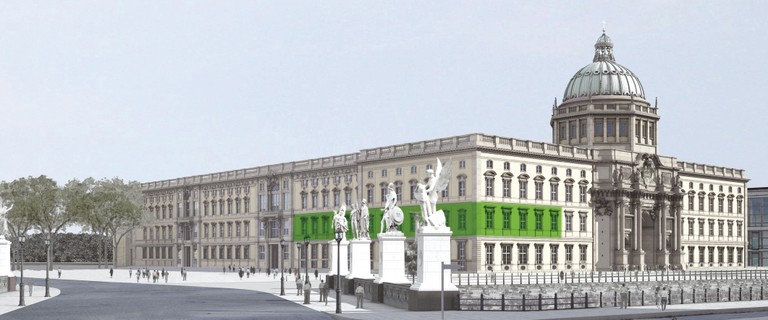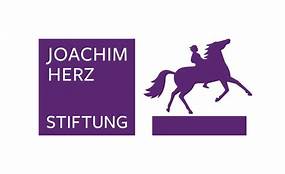
At the end of 2020, the Humboldt Forum will open in the centre of Berlin in the Berlin Palace. With the Humboldt Labor, the Humboldt Universität zu Berlin is presenting a lively place of knowledge and science on the first floor of the Humboldt Forum. In the interdisciplinary exhibition space, the public will gain insights into the diversity and relevance of science. This creates the opportunity to experience the scientific search and knowledge processes at close quarters.
The Humboldt Labor sees itself as a living workshop of ideas. Its formats are as diverse as its themes: In exhibitions, workshops, scientific experiments, lectures, discussion series, performances, media installations and research stations in the room, visitors are given the opportunity to deal with current research questions and to participate in testing the knowledge formats of the future.
The Sound Archive, one of the most important international collections of historical sound recordings, will move into the Humboldt Labor and be accessible there for research and exhibition activities. As a collection with many interfaces in terms of content with the questions posed by the other actors in the house, the Humboldt Labor is committed to working on its topics in close cooperation with the partners in the Humboldt Forum.
The Humboldt Labor is…
…open: The Humboldt Labor acts as the university’s open laboratory. It offers access to an immense spectrum of knowledge to visitors of all ages, from seasoned experts to laypersons without scientific backgrounds. Research processes can be experienced up close in the Humboldt Labor, a place where direct discussions with specialists can take place.
…current: The Humboldt Labor works on issues connected to current research at the Humboldt-Universität and its cooperation partners. Its programme provides a space to present and discuss the latest findings, making it possible to respond quickly to controversial issues.
…intercultural: The Humboldt Labor makes the university visible as a space for intercultural contact and activity. It does not just conduct research on cultures but – first and foremost – with cultures and international actors, thus combining interdisciplinary competence with intercultural competence. It is a local space with a global character.
…interactive: The Humboldt Labor communicates and produces knowledge. Through a range of activities, from exhibitions to public experiments, it aims to engage its visitors and to inspire them to form new ideas of their own.
…visionary: Together with the public, the Humboldt Labor tests new forms of learning and teaching, and will reintegrate successful models into study and research. In this way, the Humboldt Laboratory contributes to shaping the future of the university in the 21st century.
Formats
The Humboldt Labor will constantly seek new formats to present its work – formats that promote dialogue and that do justice to the objects of its research and the actors concerned: it uses exhibitions, public seminars and workshops, experiments, performances, and serious games to communicate its research.
Tradition
The Humboldt Labor continues the shared history linking the Humboldt-Universität and Berlin Palace: large parts of the collections in the chamber of curiosities in the Berlin Palace were transferred to the Humboldt-Universität 200 years ago on its founding. From the university’s beginnings, they provided a foundation for its research. Today, the Humboldt-Universität holds more than 40 scientific collections. Between 1921 and 1932, the palace was also used by the university as a scientific laboratory and was the site of the Institute of Psychology. With the Humboldt Labor, the Humboldt-Universität continues this double tradition: the Living Thought Laboratory makes scientific collections virtually accessible; the Humboldt-Universität’s Sound Archive, a unique collection of multilingual sound recordings from the early 20th century, is being relocated to the Humboldt Forum and will be opened to researchers and visitors.
Organisation
The Humboldt Labor forms part of the Hermann von Helmholtz Centre for Cultural Techniques (HZK) at the Humboldt-Universität zu Berlin and builds on the work of the Excellence Cluster Image Knowledge Gestaltung – an interdisciplinary research laboratory for the humanities, the natural and engineering sciences, medicine, and the creative disciplines design and architecture. The Humboldt Labor team can draw on the Cluster’s expertise, on more than 30,000 students and over 2,500 researchers at the Humboldt-Universität, the Berlin research landscape, and its international cooperation partners. It will make every visit a new experience.
The opening exhibition “After Nature”
Future issues of global significance provide the framework for the Humboldt Labor’s opening exhibition. How do we want to live? What does the crisis of nature have to do with the crisis of democracy? Among the university research projects presented in this context are the clusters of excellence of the three Berlin universities (Freie Universität Berlin, Humboldt-Universität zu Berlin, Technische Universität Berlin) and Charité – Universitätsmedizin Berlin, whose work will be funded for seven years from 2019 onwards as part of the “Excellence Strategy of the Federal Government and the Länder”. On a large “research wall”, which as an interactive element will also react to the audience, visitors will be able to comprehend the complex interweaving of very different research topics and perspectives, whose common ground is their particular social relevance.
Research stations designed by scientists invite visitors to the exhibition to participate in and contribute to current research. The exhibition shows objects from teaching and research collections and provides an insight into various archives of the university and the possibilities for scientific processing of its holdings. It is also planned to include student projects.
The opening exhibition occupies an area of 750 square meters and will be on display for three years. During this time, objects will be exchanged, current research results supplemented and new contexts established, so that the processual nature of science finds its equivalent in the exhibition. Particularly in view of the intended association of Berlin universities, the Humboldt Laboratory will be a central location for Berlin’s science communication as well as for experimental research in the coming years.
Staff
Management Head
Heide Barrenechea
Curator
Anna-Lisa Dieter
Curator for Outreach
Bastian Herbst
Technical Curation
Max Illner
Scenographer
Caspar Pichner
Museologist
Anja Walther
Assistance Project Management
Sylvana Brauer
Assistance Curation
Roksolana Ludyn
Assistance Technical Curation
Leo Musielski


